Art, Radical Ecologies and Class Composition: On the possible alliance between historical and new materialisms
In his text, part of the publication Art for Radical Ecologies (Manifesto), Marco Baravalle outlines a central proposition within the manifesto – namely for art practice engaging radical ecologies to interweave forms of critique and speculation across new and historical materialisms. New materialisms, Baravalle argues, runs the risk of remaining a ‘pacified, aesthetic’ category if not embued with a critique of social relations. Equally, he points to how historical materialism might be injected with the very material, specualtive capacity of new materialisms. The task is to bring these approaches together, creating a more-than-human agency that remains grounded in an analysis of contemporary power structures.
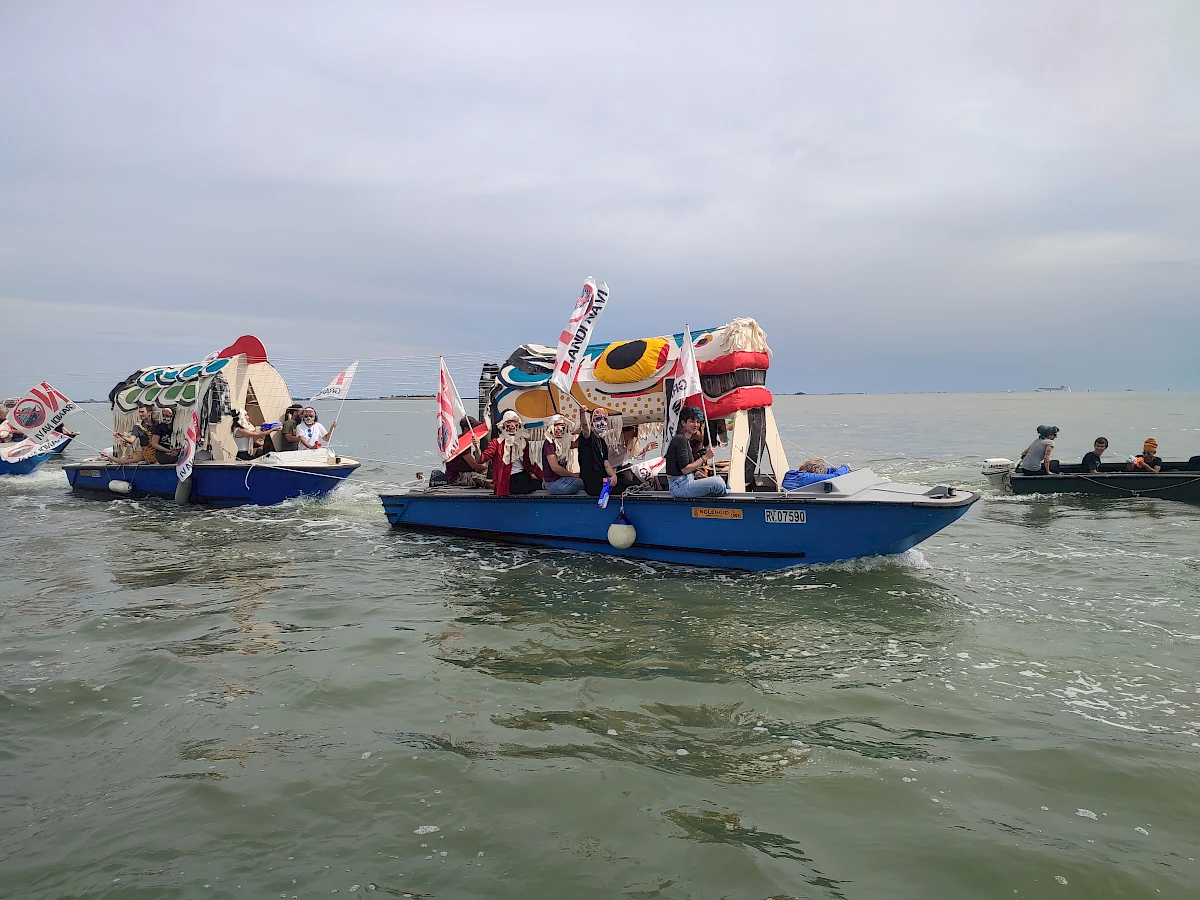
No Cruise Ships Demonstration in Venice, with props by Taring Padi and Powernotte (May 2024). Photo: Marco Baravalle
The more projects are multiplied around themes such as ecology, the Anthropocene or climate justice, the more the distance between historical materialisms and new materialisms grows. The latter are insisted upon in order to get rid of the former and, in so doing, the new ones are disciplined and depoliticized. This is an example of the governmental function that characterizes the contemporary art circuit (at least the European/North American one) in the neoliberal era.
In All Art Is Ecological, Timothy Morton argues that the experience of artwork fruition can embody an example of a relationship that undermines the usual hierarchy between human and nonhuman in an ecological sense, where the term indicates a mode of ‘co-existing nonviolently with nonhuman beings’.1 After the dematerialization that operated during the conceptual season and the marginalization of objectuality in the textual turn of postmodern criticism, Morton proposes to rehabilitate the work of art as object. According to the philosopher, the ecological relationship is manifested when the (human) spectator agrees to let herself be ‘seduced’ by the (nonhuman) work, i.e., when the latter enters into syntony with the former, expressing its own agency and provoking a feeling of attunement: ‘the feeling of an object’s power over me – I am being dragged by its tractor beam into its orbit.’2 Art, understood in this way, becomes a metaphor for an ecologically equal relationship between human and nonhuman, but also an experience that allows the viewer to recalibrate the relationship between herself and the world in a non-anthropocentric sense.
The problem arises because, according to Morton, such a potentially ecological relationship is only established on the condition of leaving aside any consideration of the institutional context, any analysis of the power relations, asymmetries, capture dispositifs, and toxic philanthropy that are at work in the institutional space and that, moreover, also act through the work of art, not only against or on it. According to this neomaterialist position, a condition for the recognition of the agency of matter is its liberation from the analysis of the social relations in which it is implicated. The result is an aesthetics that, wishing to go beyond Kant by taking him to his extreme consequences, in truth traces an idealist conception of art, in which the object is indeed in the foreground, but wrested from the sociohistorical relations in which it is implicated or within which it acts.
The agential objectuality of art is presented by Morton in contrast to those critical positions guilty of having imposed attention to the context and the display, and their possible reifying effects on the artistic experience: for example, Brian O’Doherty’s now classic analyses of the white cube. According to this viewpoint, Morton argues, the reduction of art to an object represents the ultimate degradation. Hence, the way to the redemption of said object necessarily passes through its isolation. Although Morton does not dwell on it, his aesthetics inevitably recalls the theme of art’s autonomy. Autonomy then, but, à la Morton, one that neither recalls the Adornian attributes of a paradoxical denunciation of commodity fetishism, nor that dialogues with Jacques Rancière when he describes the autonomy of art as politically radical in character, provided that this is understood historically in a necessary relationship with its opposite, i.e., elision into the social. This polarity, the French philosopher argues, is not universal, but historically determined, and emerges in the period from the birth of aesthetics to the historical avant-gardes, the interval in which the ‘aesthetic regime of the arts’ is established.3
The premises of Morton’s reasoning are not to be rejected. Why, indeed, not recognize art as having a specific power, a possible autonomy, a capacity to subvert the distribution of the sensible, not only between human beings, but also in relation to other species and inanimate objects? Why not allow ourselves to be seduced by the work of art? To fully succumb to its flattery, however, it is necessary to understand its autonomy as historically determined instead of as a universal phenomenon. It is also necessary to affirm, on the terrain of social relations, its autonomy not only with respect to a flat illustration of reality, but also with respect to neoliberal capital. Morton’s analysis, however, by dismissing the materialist perspective, ends up in a dead end. Not only because it follows that all art is already an ecologically revolutionary experience – one only needs to know how to experience it correctly – but above all because Morton ends up affirming a universalist and anti-historical idea of art, in fact endorsing the hegemonic canon. Mind you, this last assertion does not claim that art as such is nothing more than bourgeois deception, to be guarded against. On the contrary, it is argued that criticism of the neoliberal use of art can intensify attunement or any other form of perception of the potenza that the work embodies and emanates.4
A position like Morton’s is a great gift to the neoliberal art dispositif. For if we do not sink our aesthetic reflection (also) into the analysis of material relations, then we leave the way open to phenomena of depoliticization and spectacularization. The British philosopher explicitly suggests that works (best when presented in the form of objects) must cease to refer directly to the real. Such an invitation seems implicitly to suggest that the more the work adheres to the hegemonic aesthetic canon – the more enigmatic, enchanting, vertiginous and pseudo-autonomous it becomes – the more it will be able to foster episodes of attunement between the viewer and the object. Hyper-works of art as hyperobjects. And here we are confined to a model of art that is fundamentally disciplinary, that is to say, on the scale of the great biennial, the great gallery, the great museum, the great collector. This sensation seems to be confirmed by the examples Morton cites: a master of Abstract Expressionism (seen as a pop star of exquisite sensibility) and a global installation-art superstar, complete with a factory. We are in the presence of a neoliberal capture aesthetic. This (albeit less brutally, but tremendously effectively) works to maintain the status quo. And although superficially opposed to it, it is actually in tune with the reactionary turn that is sweeping the art world. This worrying turn is certainly less insidious and more easily identifiable than neoliberal capture, but no less worrying. It can be seen at work, for example, in the silencing and marginalizing response that the institutional apparatus is opposing to the voices in solidarity with the Palestinian people, decimated in Gaza by a rain of bombs, at the time of writing.
Let us return, however, to the artistic dispositifs of neoliberal capture. According to T.J. Demos, despite their differences, Bruno Latour’s and OOO’s approaches present a common political limit:
An additional obstacle with some of these approaches is that proposals for new sociopolitical compositions, modeled on a cosmopolitical scenography of global governance, as in Latour’s work, often lack a structural critique of neoliberalism … As a result, we are invited to overlook the manifold violence that is climate change. In this regard, Latour’s silence, or lack of direct engagement with corporate globalization, parallels speculative realism’s characteristic political diffidence, its general withdrawal from the political sphere of human activities, swept aside in its eagerness to theorize object-oriented ontologies.5
This limit is, often opportunistically, mirrored by art. Of the use of new materialisms in a pacified form, we have countless examples, and it seems to be a trend that will not end. One thinks of dOCUMENTA (13), curated by Carolyn Christov-Bakargiev in 2012. This was a pioneering example of capturing and defusing the conceptual arsenal of feminist and neomaterialist philosophers such as Rosi Braidotti and Donna Haraway. In the Kassel exhibition, categories such as the posthuman or methods such as speculative fabulation were declared without any friction with the neoliberal order (granted that the posthuman has this potential in itself, given Braidotti’s repeated public endorsements of neoliberal politicians), without altering a traditional curatorial approach in the slightest and without problematizing the institutional structure of the commissioner.
Exactly ten years later, the Venice Biennale curated by Cecilia Alemani picks up where dOCUMENTA (13) left off. In the curatorial statement, concepts such as the posthuman and names such as Rosi Braidotti and even Silvia Federici return to the foreground. That the reference to the latter is opportunistic can already be understood from the juxtaposition of the idea of a ‘re-enchantment of the world’,6 coined by the Marxist feminist, with that of ‘individual mythologies’, an expression that describes, in line with the practice and perspective of its creator, Harald Szeemann, a strongly reterritorializing idea of art. In Alemani’s exhibition, enchantment seems to allude to a vague return of the magical (without any reference to the historical reading of witch-hunting as a war against women), while the only politics allowed are those of identity. But the re-enchantment of the world, for Silvia Federici, is not equivalent to a return (Eurocentric and reactionary) to forms of irrationalism and esotericism. It takes place, materially, in the struggles, especially rural and especially of women in the Global South, active in the defence of lands and commons threatened by capitalist extractivism. It is there that the world re-enchants itself, in the deployment of rationalities other than the capitalist one and in the rejection of the techno-developmentalist fetish.
So, without sounding prescriptive, the hypothesis of the Art for Radical Ecologies Manifesto initiators is that the quest for a radically ecological art today passes through an interweaving, rather than a mutual exclusion, of new and historical materialisms. The new materialisms, in the absence of a critique of social relations, turn into pacified aesthetics, limited to identity politics and themes of inclusion and representation. Specularly, historical materialisms, without the recognition of the agency of matter, run the risk of remaining caged in Promethean schemes and, from the point of view of the arts, of failing to valorize the power of speculation. Of course, the relationship between Marxism and ecology today is also profoundly renewed. Kohei Saito has, through a philological study of Marx’s notebooks, brought out the ecological soul of the Trier-born philosopher, emphasizing his attention to scientific studies, biology and agrarian chemistry, from which he would have borrowed the concept of the limit of development. We are given an unprecedented Marx, from whom one could hardly deduce the morality of unlimited development of the productive forces as a horizon of liberation.
Andreas Malm, for his part, severely criticizes Bruno Latour and his followers. His target is hybridism because, by promoting an intricate ontology, it would prevent discerning the specific responsibilities of the human (in particular capitalism) in the acceleration of the climate crisis. Not that Malm preaches a return to a strict separation of nature and society. On the contrary, he recalls that he has never adhered, precisely as a historical materialist, to a binary view separating the two fields. In fact, he maintains that they share the same substance, but have different attributes: ‘substance monist, property dualism’.7 And it is only this distinction that makes it possible to articulate a dialectics between nature and society, where dialectics remains a necessary methodological tool to distinguish the extractive forms of interaction (between human and nonhuman nature) from the ecologically and socially fair ones.
Indeed, the reference to the topicality of the dialectic also seems fitting with respect to an art world (the one we find ourselves in today, forged in the expansive phase of globalization by relational aesthetics and the triumph of the biennial format) that, with its emphasis on dialogue, inclusion and representation, seems to have expelled negation and conflict, except, at best, in the ‘agonistic’ version proposed by Chantal Mouffe and Ernesto Laclau. The juxtaposition of dialectics and conflict is perhaps counterintuitive; I am referring, however, to a decolonized dialectics that passes from Frantz Fanon more than from Hegel, in which the movement of negation and the outcome of opening, rather than of synthesis-sublation, are exalted.8 At the same time, however, it is worth remembering Antonio Negri and his fundamental ‘discovery’ of the materialist genealogy of Machiavelli, Spinoza, Marx: an anti-dialectical strand, where dialectics is understood, even before Hegel, as a form of bourgeois thought, as a search for the sovereign and transcendent political synthesis against the idea of absolute democracy, against the expansion of revolutionary constituent power, in favour of its closure within the limits of formal constitutions. Thus, following in the footsteps of Malm and Negri, it can be argued that radically ecological action passes not only through the adoption of a decolonized dialectic, but also through opposition to bourgeois dialectics.
While some of Malm’s theoretical distinctions are necessary and clarifying in several respects, I do not share his belief that the recognition of nonhuman agency inevitably leads to the blurring of power relations. Rather, the challenge is to renew materialist analysis, politics and aesthetics in light of the acceptance of a diffusion of agency and a related fact, namely, the realization that not all subjects in struggle compose the world in the same way. Indigenous peoples, for example: they do not need to read Latour to reject the separation of nature and society and, at the same time, they are certainly not pacified subjectivities. On the contrary, although annihilated by centuries of colonialism, they do not give up their struggle against contemporary forms of extractivism and dispossession. Indeed, there are hundreds of Indigenous artists and curators who interpret their work within the institutional art space as a moment of struggle against persisting colonial violence, necropolitics, land expropriation, extractivism and cultural appropriation. I am thinking, for example, of the Mapuche film-maker Francisco Huichaqueo and his Mencer: Ni Pewma (2011), a kind of filmic nightmare in which centuries of colonial policies against the Chilean Mapuche are thematized, from the sixteenth century, through the Pinochet regime, to the current neoliberal policies of land expropriation. The register is not sociological documentary. According to Macarena Gomez-Barris, the director ‘breaks open the matrix of representational confinement and evacuation’,9 giving rise to a veritable ‘assault upon colonial modes of representation’.10 Translating the Mapuche sensibility towards both the visible and invisible world, Huichaqueo constructs a film in which nature has full agency, ‘the land remembers’,11 and, at the same time, in which the role of the Chilean state (from Pinochet’s nascent neoliberalism to more recent times) in the criminalization of the Indigenous defenders of land and water is denounced.
It is not, therefore, a question of imposing a way (mine) of criticizing the world. Moreover, I am as aware of my class subalternities as I am of my race and gender privileges. Materially, however, it is true that the neoliberal art circuit is voracious with subaltern aesthetics, with certain possibilities and dangers that cannot be ignored. Françoise Vergès has repeatedly pointed out that the visibility devoted to African artists and the diffusion of the term decolonization often function as a smokescreen: ‘On one hand, there is often a bowdlerisation of the works, emptying some of all radical content; on the other hand, the structural organisation of those institutions and the economy of production and distribution of works have not been transformed.’12
Therefore, it is certainly good news that an increasing number of subaltern artists, scholars and curators have access to the ‘upper echelons’ of the art system, but the danger is that they will be relegated to the terrain of identity politics and that the (albeit central and inalienable) theme of intersectionality will be deployed in a deterministic sense, imagining that opposition to the status quo will derive from subalternities automatically, without taking into account the subjectivizing effects of capital. (We will return to this.) In the space of art, this determinism is often favoured by the opportunistic blurring of the line of class subalternity, in fact reversing the error that, for decades, characterized orthodox Marxism, incapable of focusing on the forms of exploitation developed on the levels of gender, race and species. This is why the legacy of Zapatismo, its specific syncretism of Indigenous cultures and Marxism, remains central. As Negri and Hardt recall, the Zapatistas ‘demand the right not to be who we are, but rather to become what we want’.13
So how is it possible to put at work together, not in opposition, the awareness of a more-than-human agency and the materialistic analysis of power relations? How is it possible to embrace fabulative speculation and, at the same time, an idea of imagination as a common exercise in the construction of a time to come, as a collective character of present struggles?
Oliver Ressler’s filmic work is, in this respect, interesting. It offers us, at the same time, a great archive of (European and global) movements for climate justice and a way of looking at nature, nonhuman beings and matter without ever understanding them as a backdrop to human action, but always as a vibrant presence. The long lingers of Ressler’s camera on the landscape, a mine, a forest, a CO2 storage facility, are not photographs of backdrops waiting for a human performance; instead they force the viewer to see them as full, as actors and not as sets.
A second example is the exhibition ‘Life on Planet Orsimanirana’ (2021), at the Museum für Kunst und Gewerbe Hamburg, curated by Emanuele Braga, Jerszy Seymour and Amica Dall. It is a case involving the speculative enterprise of inventing a planet in which care (both intra-human and inter-species) becomes the compass of existence. This is combined with a focus on real struggles for the metropolitan commons and a successful attempt to deploy the museum in the context of a city campaign for the fate of a former power station, a place in dispute between the owners, anxious to speculate, and a local cooperative that has proposed the public purchase of the asset to make it into a cultural production centre. Many topics central to the exhibition were recently addressed by Emanuele Braga in a book titled Moleculocracy, where the author focuses on the genealogy of a counter-science, one opening up a vision of nature at odds with the one built by the science of capital.14
These practices seem to ideally dialogue with the work of Léna Balaud and Antoine Chopot, who propose a suggestive hypothesis of a renewal of the Marxist position. Indeed, they espouse the nonhuman turn, but argue that the ‘democratisation of agency’ does not erase human responsibility – that, on the contrary, it makes us more responsible in the face of the need to dismantle the current ‘agencements ecopolitiques’ (ecopolitical arrangements) and create new ones.15
Balaud, for her part, recovers some of the tools of the operaista arsenal, in particular the analysis of class composition, but broadens the spectrum beyond just the relations of production between humans and integrates nature put to work. Just as the operaisti argue for the primacy of workers’ resistance, i.e., the fact that it is the real engine of capitalist development, so the French researcher argues that nonhuman resistances, though certainly not consciously directed, propel the green revolutions of capital forward. In short, just as proletarians express a degree of autonomy in the face of capital, so does nonhuman nature. It is clear, however, that the autonomy of nonhuman nature is not consciously directed; it is not driven by any class consciousness. This is where the need to rethink class composition comes in. In fact, just as operaista research had first identified the ‘mass worker’ and then the ‘social worker’ as the subjects of this rupture, so it is a question of renewing this method in the light of the challenge posed by the Anthropocene. Today, according to Balaud, it would be necessary to proceed to the analysis of ‘ecological composition’,16 starting from the study of the ecological phenomena involved in the capital relationship. The point, however, is that, viewed from this perspective, the refusal of labour (another cornerstone of operaista theory) remains an open problem. Indeed, if in the 1960s the workers on whom capital depended were the same workers who could subjectivize themselves to hate it, the same thing cannot happen today in the relationship between eco-technical and eco-political composition. The human cannot subjectivize itself in place of the nonhuman, nor can the nonhuman subjectivize itself as such.
Balaud then proposes to rethink class composition as a new system of alliances between human and other-than-human: ‘interspecific resistances’ that can evolve into ‘interspecific factions’.17 A good example of the first kind ‘is the fight against Monsanto in Argentina and Paraguay’:
In response to the resistance to glyphosate of the superweed Amaranthus palmeri, the inhabitants of the area, dispossessed of their land and contaminated by pesticides due to GMO soya monocultures, recognized in the Amaranthus an initiative that needed to be responded to. Thus, a new mode of action was invented, suitable for collaborating with the weed’s resistance: they practised throwing Amaranthus seed bombs into the monoculture fields, thus amplifying its action of sabotaging soya production.18
Apart from the specific example and the proposal to consider a new eco-political composition, the reference to operaismo, in which the militant investigation into class composition is an essential moment of a method of political organization, is useful because, unlike the sole emphasis on intersectionality (which, I repeat for the avoidance of misunderstanding, remains an indispensable tool of analysis), it takes into account the subjectivizing effects of capitalism. Indeed, there is no deterministic relationship between lines of oppression and anti-capitalist subjectivation. This is clear if we look at the institutional circuit of art, a space in which capital often renounces its character of violent domination, functioning rather as an instrument of subjectivation that acts on subaltern subjects, discourses and imaginaries, annihilating their subversive potential. Class composition, by interweaving the analysis of the forms in which production is organized with that of the forms of life of the subjects put to work, thus remains a useful concept-method for identifying revolutionary subjects and points of rupture, outside of any determinist scheme.
The question is: What are the new subjects or the new assemblages and factions that can embody radically ecological action? Clearly this is an open question, but also a valuable indication of aesthetic-political method for the artistic field, which can indeed represent an important laboratory. This, provided that the speculative force is not locked within rigid disciplinary boundaries, that creativity is not only declared as an attribute of the individual artistic operator in the market, but also as a character that the social is able to express. The maturity to act in a counter-hegemonic sense within (where possible) the institutional space will be decisive, along with the strength to make the abolitionist tension one’s own and, consequently, the commitment to the (arduous, but necessary) construction of an alter-institutional infrastructure alternative to the neoliberal one.
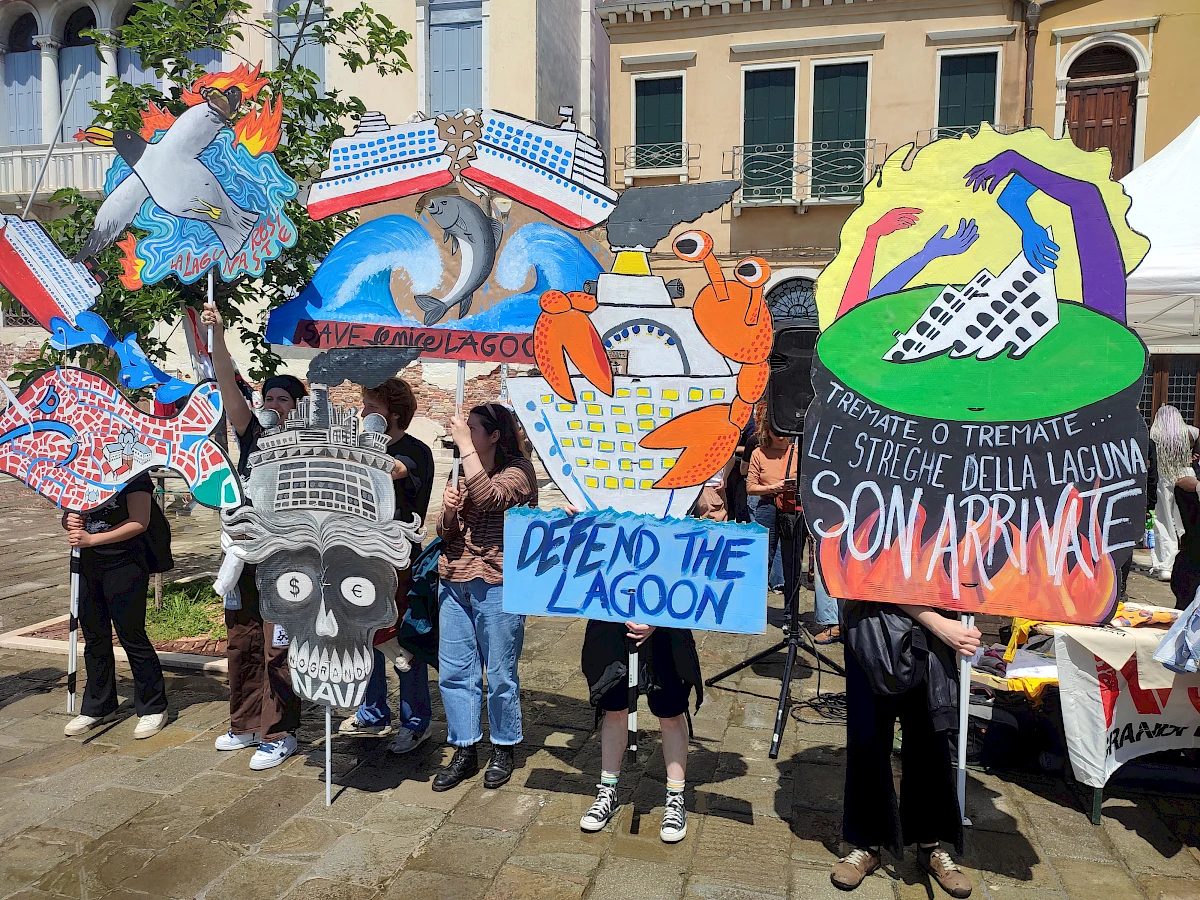
No Cruise Ships Demonstration in Venice, with props by Taring Padi and Powernotte (May 2024). Photo: Marco Baravalle
Related activities
-
HDK-Valand
Climate Forum I

The Climate Forum is a space of dialogue and exchange with respect to the concrete operational practices being implemented within the art field in response to climate change and ecological degradation. This is the first in a series of meetings hosted by HDK-Valand within L'Internationale's Museum of the Commons programme.
-
–Van Abbemuseum
The Soils Project
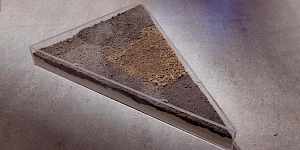
‘The Soils Project’ is part of an eponymous, long-term research initiative involving TarraWarra Museum of Art (Wurundjeri Country, Australia), the Van Abbemuseum (Eindhoven, Netherlands) and Struggles for Sovereignty, a collective based in Yogyakarta, Indonesia. It works through specific and situated practices that consider soil, as both metaphor and matter.
Seeking and facilitating opportunities to listen to diverse voices and perspectives around notions of caring for land, soil and sovereign territories, the project has been in development since 2018. An international collaboration between three organisations, and several artists, curators, writers and activists, it has manifested in various iterations over several years. The group exhibition ‘Soils’ at the Van Abbemuseum is part of Museum of the Commons. -
–Museo Reina Sofia
Sustainable Art Production
The Studies Center of Museo Reina Sofía will publish an open call for four residencies of artistic practice for projects that address the emergencies and challenges derived from the climate crisis such as food sovereignty, architecture and sustainability, communal practices, diasporas and exiles or ecological and political sustainability, among others.
-
–tranzit.ro
Non-Western Technologies for the Good Life
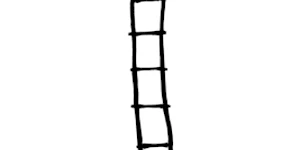
The experimental course ‘Non-Western Technologies for the Good Life’ (November 2023–May 2024) celebrates as its starting point the anniversary of 50 years since the publication of Tools for Conviviality, considering that Ivan Illich’s call is as relevant as ever.
-
Institute of Radical ImaginationMSU Zagreb
Red, Green, Black and White

A performative inquiry by Institute of Radical Imagination and MSU Zagreb
-
–Moderna galerijaZRC SAZU
Open Call – Summer School: Our Many Easts
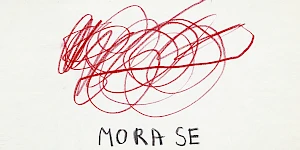
Our Many Easts summer school takes place in Ljubljana 24–30 August and the application deadline is 15 March. Courses will be held in English and cover topics such as the legacy of the Eastern European avant-gardes, archives as tools of emancipation, the new “non-aligned” networks, art in times of conflict and war, ecology and the environment.
-
–Institute of Radical Imagination
Gathering into the Maelstrom
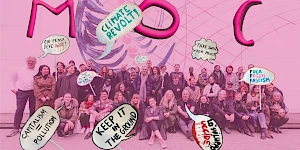
‘Gathering into the Maelstrom’ in Venice at Sale Docks is a four-day programme curated by Institute of Radical Imagination (IRI) and Sale Docks.
-
–Institute of Radical Imagination
Gathering into the Maelstrom (exhibition)
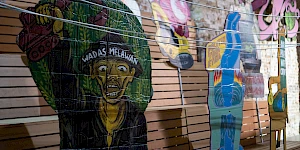
‘Gathering into the Maelstrom’ is curated by Institute of Radical Imagination and Sale Docks within the framework of Museum of the Commons.
-
–M HKA
The Lives of Animals
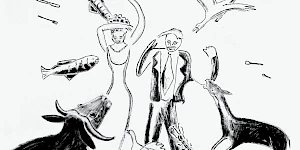
‘The Lives of Animals’ is a group exhibition at M HKA that looks at the subject of animals from the perspective of the visual arts.
-
–SALT
Warm Earth Sounds for Plants and the People Who Love Them

‘Warm Earth Sounds for Plants and the People Who Love Them’ is a series of sound installations by Özcan Ertek, Fulya Uçanok, Ömer Sarıgedik, Zeynep Ayşe Hatipoğlu, and Passepartout Duo, presented at Salt in Istanbul.
-
–SALT
Sound of Green
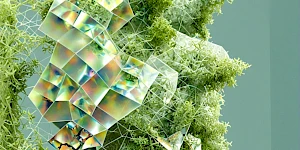
‘Warm Earth Sounds for Plants and the People Who Love Them’ at Salt in Istanbul begins on 5 June, World Environment Day, with Özcan Ertek’s installation ‘Sound of Green’.
-
–Museo Reina Sofia
Open Call: Research Residencies
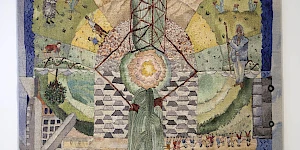
The Centro de Estudios of Museo Reina Sofía releases its open call for research residencies as part of the climate thread within the Museum of the Commons programme.
-
HDK-Valand
Climate Forum II
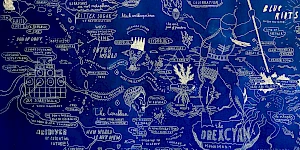
The Climate Forum is a series of online meetings hosted by HDK-Valand within L’Internationale’s Museum of the Commons programme. The series builds upon earlier research resulting in the (2022) book Climate: Our Right to Breathe and reaches toward emerging change practices.
-
HDK-Valand
Climate Forum III

The Climate Forum is a series of online meetings hosted by HDK-Valand within L’Internationale’s Museum of the Commons programme. The series builds upon earlier research resulting in the (2022) book Climate: Our Right to Breathe and reaches toward emerging change practices.
-
The Open Kitchen. Food networks in an emergency situation

with Marina Monsonís, the Cabanyal cooking, Resistencia Migrante Disidente and Assemblea Catalana per la Transició Ecosocial
The MACBA Kitchen is a working group situated against the backdrop of ecosocial crisis. Participants in the group aim to highlight the importance of intuitively imagining an ecofeminist kitchen, and take a particular interest in the wisdom of individuals, projects and experiences that work with dislocated knowledge in relation to food sovereignty. -
–M HKA
The Geopolitics of Infrastructure

The exhibition The Geopolitics of Infrastructure presents the work of a generation of artists bringing contemporary perspectives on the particular topicality of infrastructure in a transnational, geopolitical context.
-
–MACBAMuseo Reina Sofia
School of Common Knowledge 2025
The second iteration of the School of Common Knowledge will bring together international participants, faculty from the confederation and situated organizations in Barcelona and Madrid.
-
–SALT
The Lives of Animals, Salt Beyoğlu
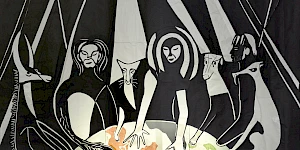
‘The Lives of Animals’ is a group exhibition at Salt that looks at the subject of animals from the perspective of the visual arts.
-
–SALT
Plant(ing) Entanglements

The series of sound installations Warm Earth Sounds for Plants and the People Who Love Them ends with Fulya Uçanok’s sound installation Plant(ing) Entanglements.
-
–Museo Reina Sofia
Sustainable Art Production. Research Residencies
The projects selected in the first call of the Sustainable Art Practice research residencies are A hores d'ara. Experiences and memory of the defense of the Huerta valenciana through its archive by the group of researchers Anaïs Florin, Natalia Castellano and Alba Herrero; and Fundamental Errors by the filmmaker and architect Mauricio Freyre.
-
–IMMANCAD
Summer School: Landscape (post) Conflict

The Irish Museum of Modern Art and the National College of Art and Design, as part of L’internationale Museum of the Commons, is hosting a Summer School in Dublin between 7-11 July 2025. This week-long programme of lectures, discussions, workshops and excursions will focus on the theme of Landscape (post) Conflict and will feature a number of national and international artists, theorists and educators including Jill Jarvis, Amanda Dunsmore, Yazan Kahlili, Zdenka Badovinac, Marielle MacLeman, Léann Herlihy, Slinko, Clodagh Emoe, Odessa Warren and Clare Bell.
-
HDK-Valand
Climate Forum IV
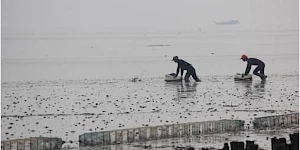
The Climate Forum is a series of online meetings hosted by HDK-Valand within L’Internationale’s Museum of the Commons programme. The series builds upon earlier research resulting in the (2022) book Climate: Our Right to Breathe and reaches toward emerging change practices.
-
–MSU Zagreb
October School: Moving Beyond Collapse: Reimagining Institutions
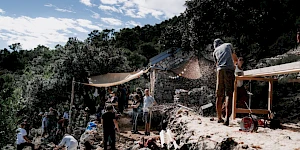
The October School at ISSA will offer space and time for a joint exploration and re-imagination of institutions combining both theoretical and practical work through actually building a school on Vis. It will take place on the island of Vis, off of the Croatian coast, organized under the L’Internationale project Museum of the Commons by the Museum of Contemporary Art in Zagreb and the Island School of Social Autonomy (ISSA). It will offer a rich program consisting of readings, lectures, collective work and workshops, with Adania Shibli, Kristin Ross, Robert Perišić, Saša Savanović, Srećko Horvat, Marko Pogačar, Zdenka Badovinac, Bojana Piškur, Theo Prodromidis, Ovidiu Ţichindeleanu, Progressive International, Naan-Aligned cooking, and others.
-
HDK-Valand
MA Forum in collaboration with LIO: Nour Shantout
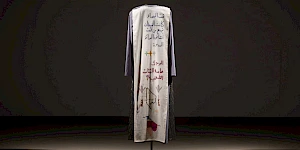
In this artist talk, Nour Shantout will present Searching for the New Dress, an ongoing artistic research project that looks at Palestinian embroidery in Shatila, a Palestinian refugee camp in Lebanon. Welcome!
Related contributions and publications
-
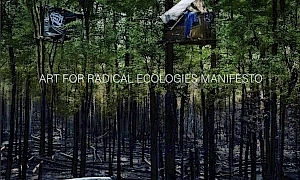
Art for Radical Ecologies Manifesto
Institute of Radical ImaginationLand RelationsClimateInstitute of Radical Imagination -
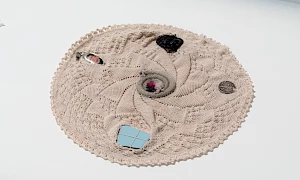
Decolonial aesthesis: weaving each other
Charles Esche, Rolando Vázquez, Teresa Cos RebolloLand RelationsClimate -
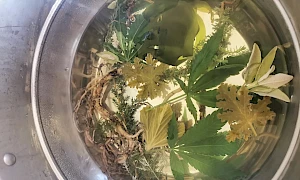
Climate Forum I – Readings
Nkule MabasoEN esLand RelationsClimateHDK-Valand -

…and the Earth along. Tales about the making, remaking and unmaking of the world.
Martin PogačarLand RelationsClimatePast in the Present -
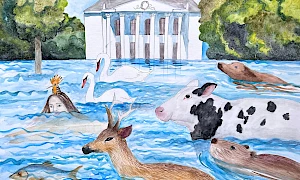
Pollution as a Weapon of War
Svitlana MatviyenkoClimate -
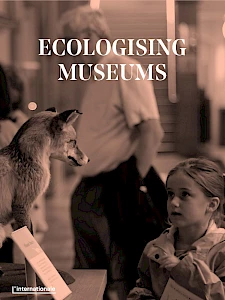
Ecologising Museums
Land Relations -
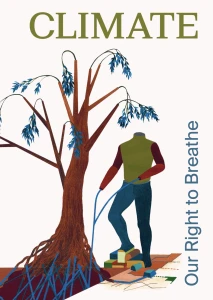
Climate: Our Right to Breathe
Land RelationsClimate -
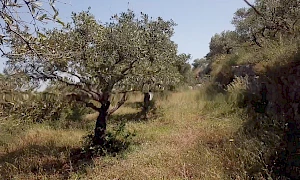
A Letter Inside a Letter: How Labor Appears and Disappears
Marwa ArsaniosLand RelationsClimate -

Seeds Shall Set Us Free II
Munem WasifLand RelationsClimate -
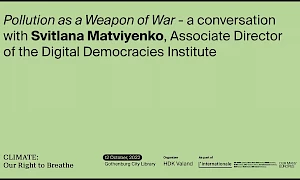
Pollution as a Weapon of War – a conversation with Svitlana Matviyenko
Svitlana MatviyenkoClimateClimate book launchHDK-Valand -
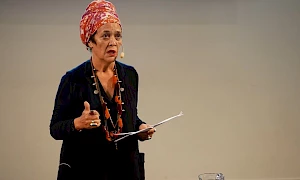
Françoise Vergès – Breathing: A Revolutionary Act
Françoise VergèsClimateClimate book launchHDK-Valand -

Ana Teixeira Pinto – Fire and Fuel: Energy and Chronopolitical Allegory
Ana Teixeira PintoClimateClimate book launchHDK-Valand -

Watery Histories – a conversation between artists Katarina Pirak Sikku and Léuli Eshrāghi
Léuli Eshrāghi, Katarina Pirak SikkuClimateClimate book launchHDK-Valand -
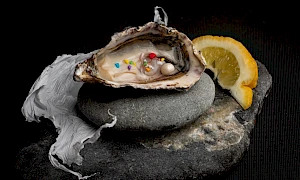
Discomfort at Dinner: The role of food work in challenging empire
Mary FawzyLand RelationsSituated Organizations -

Indra's Web
Vandana SinghLand RelationsPast in the PresentClimate -
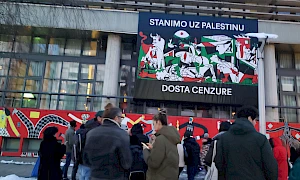
The Silence Has Been Unfolding For Too Long
The Free Palestine Initiative CroatiaInternationalismsPast in the PresentSituated OrganizationsInstitute of Radical ImaginationMSU Zagreb -
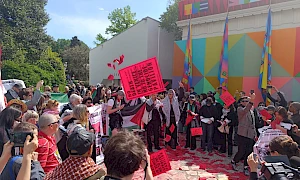
En dag kommer friheten att finnas
Françoise Vergès, Maddalena FragnitoEN svInternationalismsLand RelationsClimateInstitute of Radical Imagination -
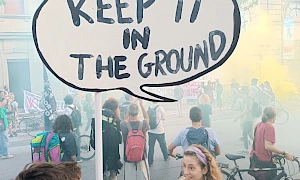
Art and Materialisms: At the intersection of New Materialisms and Operaismo
Emanuele BragaLand RelationsClimateInstitute of Radical Imagination -
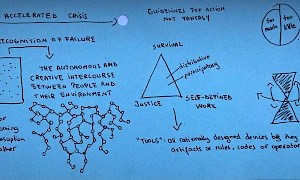
Dispatch: Harvesting Non-Western Epistemologies (ongoing)
Adelina LuftLand RelationsSchoolsClimatetranzit.ro -
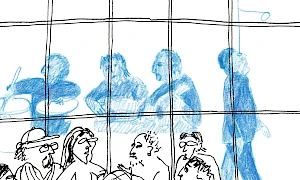
Dispatch: From the Eleventh Session of Non-Western Technologies for the Good Life
Ana KunLand RelationsSchoolstranzit.ro -
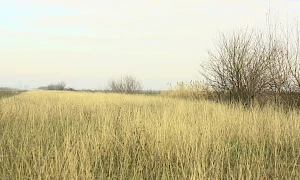
Dispatch: Practicing Conviviality
Ana BarbuClimateSchoolsLand Relationstranzit.ro -

Dispatch: Notes on Separation and Conviviality
Raluca PopaLand RelationsSchoolsSituated OrganizationsClimatetranzit.ro -

Dispatch: The Arrow of Time
Catherine MorlandClimatetranzit.ro -

To Build an Ecological Art Institution: The Experimental Station for Research on Art and Life
Ovidiu Ţichindeleanu, Raluca VoineaLand RelationsClimateSituated Organizationstranzit.ro -

Dispatch: A Shared Dialogue
Irina Botea Bucan, Jon DeanLand RelationsSchoolsClimatetranzit.ro -
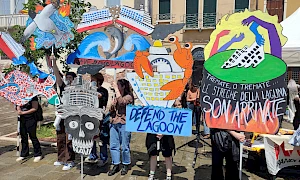
Art, Radical Ecologies and Class Composition: On the possible alliance between historical and new materialisms
Marco BaravalleLand RelationsClimateInstitute of Radical Imagination -

‘Territorios en resistencia’, Artistic Perspectives from Latin America
Rosa Jijón & Francesco Martone (A4C), Sofía Acosta Varea, Boloh Miranda Izquierdo, Anamaría GarzónLand RelationsClimateInstitute of Radical Imagination -

Unhinging the Dual Machine: The Politics of Radical Kinship for a Different Art Ecology
Federica TimetoLand RelationsClimateInstitute of Radical Imagination -
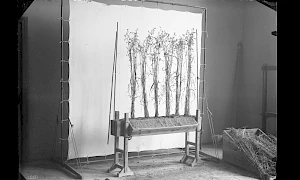
Cultivating Abundance
Åsa SonjasdotterLand RelationsClimatePast in the Present -
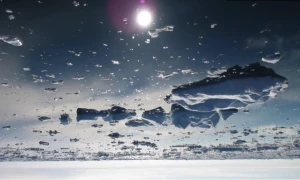
Climate Forum II – Readings
Nkule Mabaso, Nick AikensLand RelationsClimateHDK-Valand -
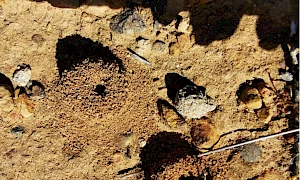
Klei eten is geen eetstoornis
Zayaan KhanEN nl frLand RelationsClimatePast in the Present -

Glöm ”aldrig mer”, det är alltid redan krig
Martin PogačarEN svLand RelationsPast in the Present -

Graduation
Koleka PutumaLand RelationsClimate -
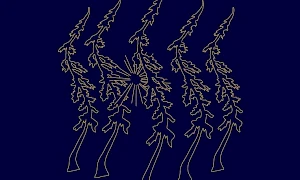
Depression
Gargi BhattacharyyaLand RelationsClimate -
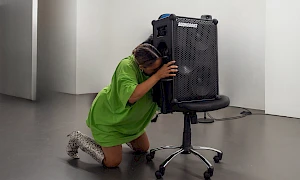
Climate Forum III – Readings
Yolande Zola Zoli van der HeideLand RelationsClimate -
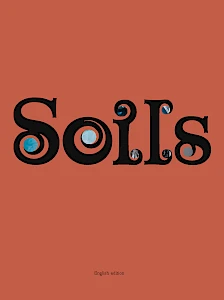
Soils
Land RelationsClimateVan Abbemuseum -
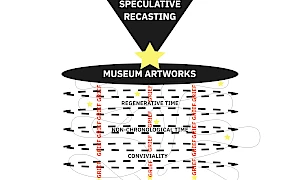
Dispatch: There is grief, but there is also life
Cathryn KlastoLand RelationsClimate -
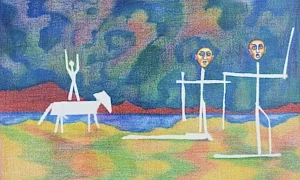
Beyond Distorted Realities: Palestine, Magical Realism and Climate Fiction
Sanabel Abdel RahmanEN trInternationalismsPast in the PresentClimate -

Dispatch: Care Work is Grief Work
Abril Cisneros RamírezLand RelationsClimate -

Reading List: Lives of Animals
Joanna ZielińskaLand RelationsClimateM HKA -

Sonic Room: Translating Animals
Joanna ZielińskaLand RelationsClimate -

Encounters with Ecologies of the Savannah – Aadaajii laɗɗe
Katia GolovkoLand RelationsClimate -
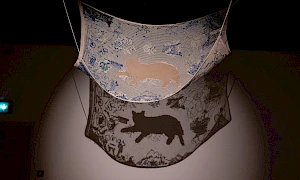
Trans Species Solidarity in Dark Times
Fahim AmirEN trLand RelationsClimate -

Reading List: Summer School, Landscape (post) Conflict
Summer School - Landscape (post) ConflictSchoolsLand RelationsPast in the PresentIMMANCAD -

Solidarity is the Tenderness of the Species – Cohabitation its Lived Exploration
Fahim AmirEN trLand Relations -

Dispatch: Reenacting the loop. Notes on conflict and historiography
Giulia TerralavoroSchoolsLand RelationsIMMANCAD -
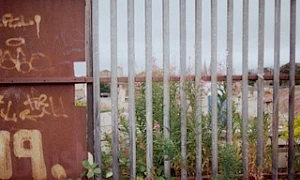
Dispatch: Haunting, cataloging and the phenomena of disintegration
Coco GoranSchoolsLand RelationsIMMANCAD -
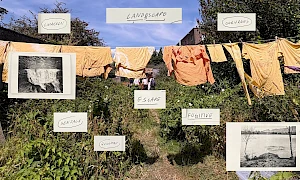
Dispatch: Landescape – bending words or what a new terminology on post-conflict could be
Amanda CarneiroSchoolsLand RelationsIMMANCAD -

Dispatch: Landscape (Post) Conflict – Mediating the In-Between
Janine DavidsonSchoolsLand RelationsIMMANCAD -
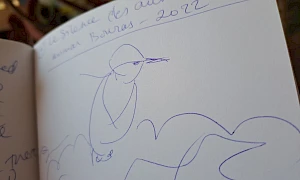
Dispatch: Excerpts from the six days and sixty one pages of the black sketchbook
Sabine El ChamaaSchoolsLand RelationsIMMANCAD -

Dispatch: Withstanding. Notes on the material resonance of the archive and its practice
Giulio GonellaSchoolsLand RelationsIMMANCAD -
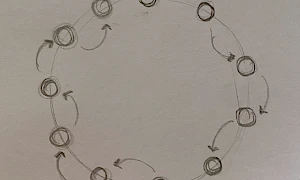
Climate Forum IV – Readings
Merve BedirLand RelationsHDK-Valand -
Land Relations: Editorial
L'Internationale Online Editorial BoardLand Relations -

Dispatch: Between Pages and Borders – (post) Reflection on Summer School ‘Landscape (post) Conflict’
Daria RiabovaSchoolsLand RelationsIMMANCAD -

Between Care and Violence: The Dogs of Istanbul
Mine YıldırımLand Relations -

Reading list: October School. Reimagining Institutions
October SchoolSchoolsSituated OrganizationsClimateMSU Zagreb -
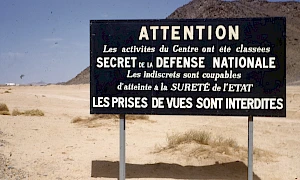
The Debt of Settler Colonialism and Climate Catastrophe
Nataša Petrešin-Bachelez, Olivier Marbœuf, Samia Henni, Marie-Hélène Villierme and Mililani GanivetLand Relations -
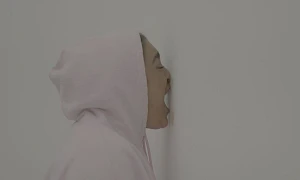
We, the Heartbroken, Part II: A Conversation Between G and Yolande Zola Zoli van der Heide
G, Yolande Zola Zoli van der HeideClimateLand Relations -

Breaths of Knowledges
Robel TemesgenClimateLand Relations